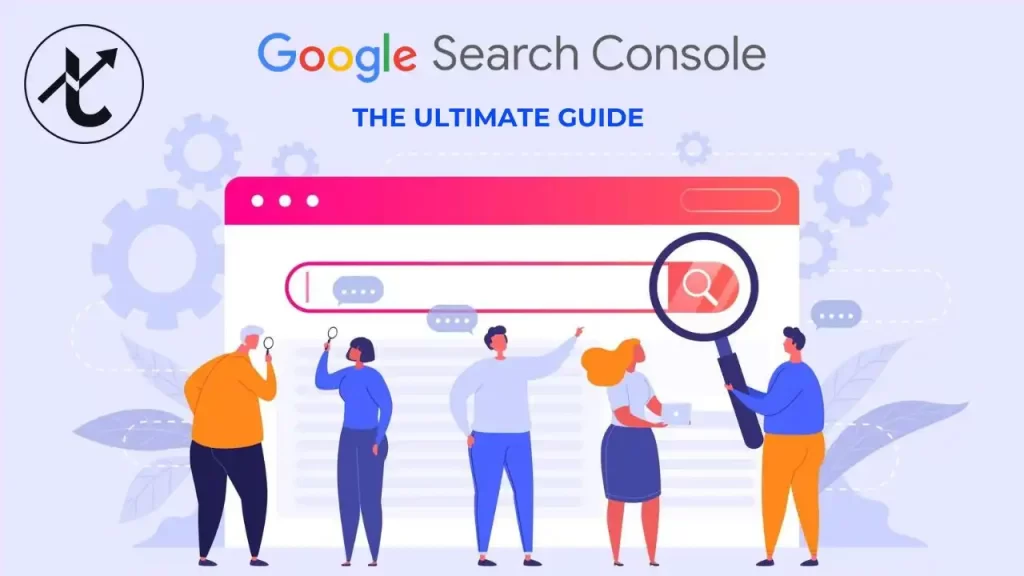If you’re aiming to grab your audience’s attention straight from the search results, featured snippets are your secret weapon. These rich results—often called “Position Zero”—appear above all organic listings on Google and can drive a significant amount of traffic to your website. But getting your content into that prized spot isn’t just luck—it requires smart featured snippets optimization. In this blog, we’ll break down how featured snippets work, why they matter for your SEO strategy, and what practical steps you can take to win more clicks in 2025.
What Are Featured Snippets and Why They Matter
Featured snippets are those neat little boxes you see at the top of Google’s search results, often called “position zero.” They give quick answers to questions, like definitions, lists, or tables, pulled directly from a website. For example, if you search “how to make a cake,” you might see a step-by-step list right at the top—that’s a featured snippet.
Why are they important? Because they grab attention and get more clicks. People trust these snippets since they’re handpicked by Google. Plus, with no-click search results becoming more common (where users get answers without clicking through), appearing in a featured snippet ensures your site still gets noticed. Optimizing for featured snippets also aligns with voice search optimization, as assistants like Siri or Alexa often read out these snippets.
How to Optimize for Featured Snippets
To win a featured snippet, you need to create content that Google loves to show. Here’s how to do it:
1. Target Question-Based Keywords
Google loves answering questions in snippets. Focus on keywords starting with “what,” “how,” “why,” or “when.” For example, instead of targeting “cake recipe,” aim for “how to make a chocolate cake.” Use tools like AnswerThePublic to find popular questions related to your topic.
2. Structure Your Content Clearly
Snippets favor well-organized content. Use:
- Lists: Bullet points or numbered steps work great for “how-to” queries.
- Tables: Perfect for comparisons or data, like “best phones under $500.”
- Paragraphs: Short, clear answers (40-60 words) for definitions or quick facts.
For example, if you’re writing about “best SEO tools,” create a table comparing features and prices to boost your chances of landing a featured snippet.
3. Answer Directly and Concisely
Google picks snippets that answer questions straight to the point. If the question is “What is SEO?”, your answer should start with: “SEO, or Search Engine Optimization, is the process of improving your website to rank higher on search engines.” Keep it simple and direct.
4. Use Headers with Keywords
Include your main keywords, like featured snippets optimization, in your headers (H2, H3). This signals to Google what your content is about. For instance, this section’s header uses the keyword to stay focused.
By following these steps, you’re setting up your content to be snippet-ready, increasing your chances of winning that top spot and getting more clicks.
Mastering the People Also Ask Strategy
The People Also Ask (PAA) section is another goldmine for clicks. These are the expandable questions that show up in search results, often related to the main query. Here’s how to master the People Also Ask strategy:
1. Find PAA Questions
Search your main keyword on Google and check the PAA box. For example, searching “featured snippets optimization” might show questions like:
- “How do I optimize for featured snippets?”
- “What types of featured snippets are there?” Write down these questions and create content that answers them.
2. Create Dedicated Sections
For each PAA question, add a section in your content with a clear header. Use the exact question as your H2 or H3 header to match what users are searching. For example:
How Do I Optimize for Featured Snippets?
Answer with a concise paragraph or list, just like we did above.
3. Link to Related Content
If you have other blog posts or pages that dive deeper into a PAA question, link to them. This keeps users on your site longer and boosts your SEO. For example, link to a detailed guide on voice search optimization if it’s relevant.
4. Keep Answers Short and Sweet
PAA answers in search results are usually 40-50 words. Mimic this in your content. For instance, if the question is “Why are featured snippets important?”, answer: “Featured snippets appear at the top of search results, driving more clicks and visibility to your site.”
By targeting PAA questions, you can appear in multiple spots on the search results page, increasing your chances of clicks even with no-click search results.
Voice Search Optimization for Featured Snippets
Voice search optimization is a must because more people are using devices like Alexa, Google Assistant, or Siri to search. These devices often pull answers from featured snippets, making it critical to optimize for both.
1. Use Conversational Language
Voice searches are more natural, like how people talk. Instead of “SEO tips,” users might say, “What are the best SEO tips for beginners?” Write your content in a conversational tone, like you’re talking to a friend. For example: “Want to rank higher? Try these simple SEO tips!”
2. Focus on Long-Tail Keywords
Voice searches are often longer phrases. Target long-tail keywords like “how to optimize for featured snippets in 2025” instead of just “featured snippets.” This aligns with how people ask questions aloud.
3. Optimize for Local Search
Many voice searches are location-based, like “best coffee shops near me.” If your business is local, include location-specific keywords and claim your Google My Business profile to boost your chances of appearing in snippets.
4. Test for Voice Readability
Read your content aloud. Does it sound natural? If it’s clunky or too formal, simplify it. Voice assistants prefer clear, concise answers, so keep your snippet-friendly answers short.
By combining voice search optimization with featured snippets optimization, you’re more likely to be the answer read aloud by a voice assistant, driving traffic to your site.
Handling No-Click Search Results
No-click search results happen when users get their answers directly on the search page, like in a featured snippet or PAA box, without clicking through. While this sounds bad, you can turn it into an opportunity.
1. Be the Featured Snippet
If you land the featured snippet, users still see your brand and might click through for more details. Focus on featured snippets optimization to ensure you’re the one providing the answer.
2. Entice Users to Click
Even if your snippet answers the question, give users a reason to visit your site. For example, add a teaser like: “Want more tips? Check out our full guide!” This encourages clicks despite no-click search results.
3. Use Engaging Meta Descriptions
Your meta description (the text below your page title in search results) should be catchy. For example: “Discover 7 easy ways to master featured snippets and boost clicks!” This can pull users to your site even if the snippet answers their query.
4. Target Complex Questions
For questions that can’t be fully answered in a snippet, like “How to create a marketing plan,” provide a brief answer but hint at deeper insights on your site. This pushes users to click for the full scoop.
By smartly handling no-click search results, you can still drive traffic even when users get quick answers.
Tips to Combine Featured Snippets and PAA for Maximum Clicks
To really boost your clicks, combine featured snippets optimization with a strong People Also Ask strategy. Here’s how:
1. Create Comprehensive Content
Write long-form content (like this 2000-word blog) that answers both the main query and related PAA questions. For example, this post covers featured snippets optimization, voice search, and PAA strategy all in one.
2. Use a FAQ Section
Add a Frequently Asked Questions section at the end of your post, answering PAA questions. Format it like:
FAQ: Featured Snippets and PAA
- What is a featured snippet? A box at the top of Google’s results giving a quick answer.
- How do I appear in PAA? Answer related questions clearly with headers.
3. Optimize for Multiple Snippet Types
Google shows different snippet types: paragraphs, lists, tables, or videos. Create varied content to target them all. For example, use a table for comparisons, a list for steps, and a short paragraph for definitions.
4. Update Content Regularly
Google loves fresh content. Update your posts every few months to keep them relevant for featured snippets and PAA. Add new PAA questions you find in search results.
This combo approach ensures you dominate search results, grabbing both the snippet and PAA spots for maximum clicks.
Tracking Your Featured Snippets Success
To know if your featured snippets optimization is working, you need to track your progress. Here’s how:
1. Use SEO Tools
Tools like Ahrefs, SEMrush, or Moz can show if your pages are ranking in featured snippets or PAA boxes. Check the “SERP Features” report to see your wins.
2. Monitor Click-Through Rates (CTR)
Google Search Console shows your CTR for specific keywords. If your CTR jumps after optimizing for snippets, you’re on the right track.
3. Track Voice Search Performance
Since voice search optimization ties to snippets, use tools like Google Analytics to see if traffic from voice searches is increasing. Look for queries with conversational phrases.
4. Check Competitor Snippets
Search your keywords and see who’s winning the snippets. If it’s not you, analyze their content and improve yours. For example, if their snippet uses a table, add a better one to your post.
Tracking helps you refine your featured snippets optimization and PAA strategy to keep winning clicks.
Conclusion: Start Winning More Clicks Today
Getting your content into Google’s featured snippets isn’t just about ranking—it’s about standing out. With smart featured snippets optimization, you can win Position Zero, increase visibility, and drive more qualified clicks without spending a dime on ads. From using structured content and answering user questions directly, to formatting your blog properly, every small step can bring you closer to that top spot. As search evolves in 2025, staying ahead with snippet-focused strategies isn’t just smart—it’s essential. So start optimizing today, and let your content do the talking—right at the top of the results page.




